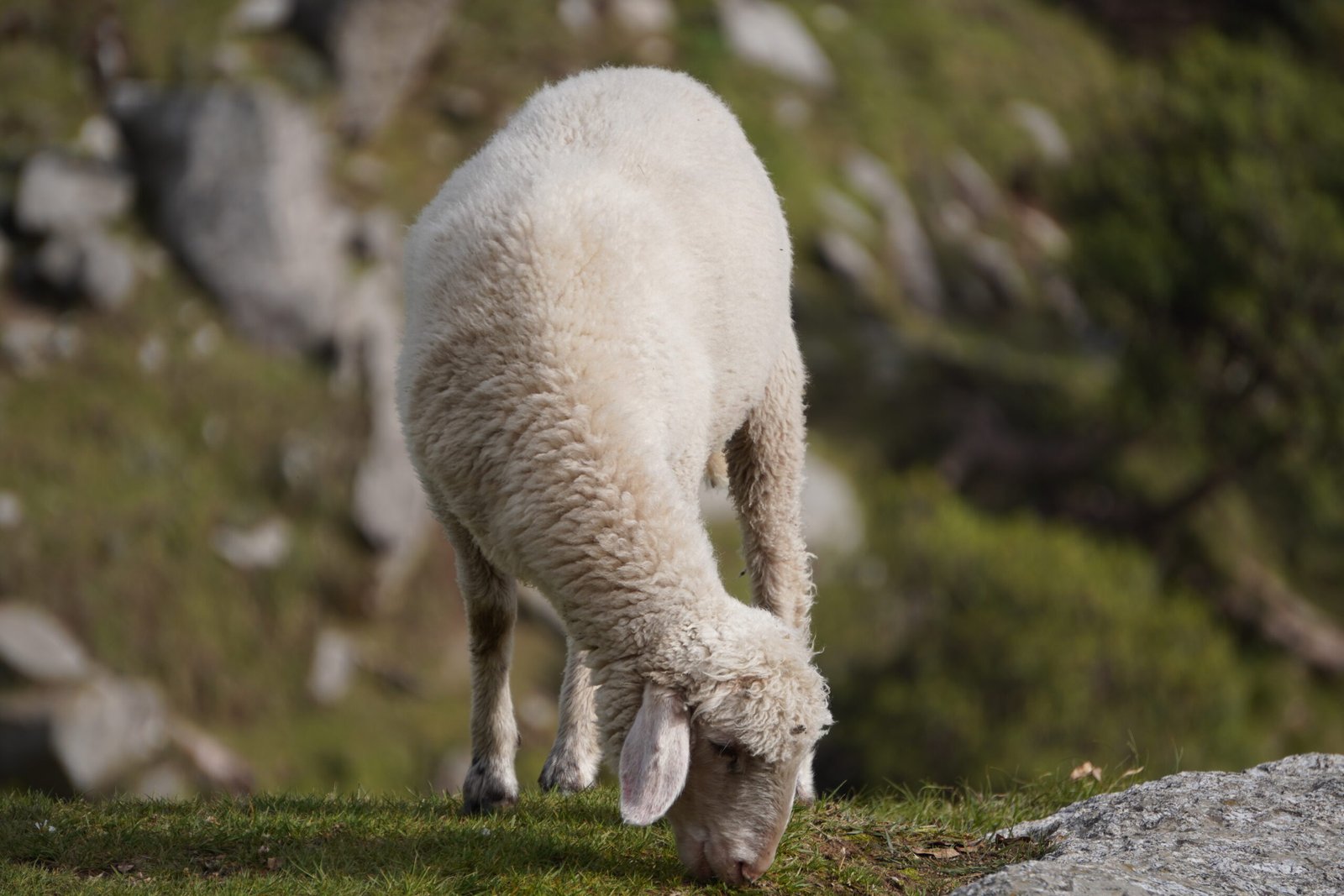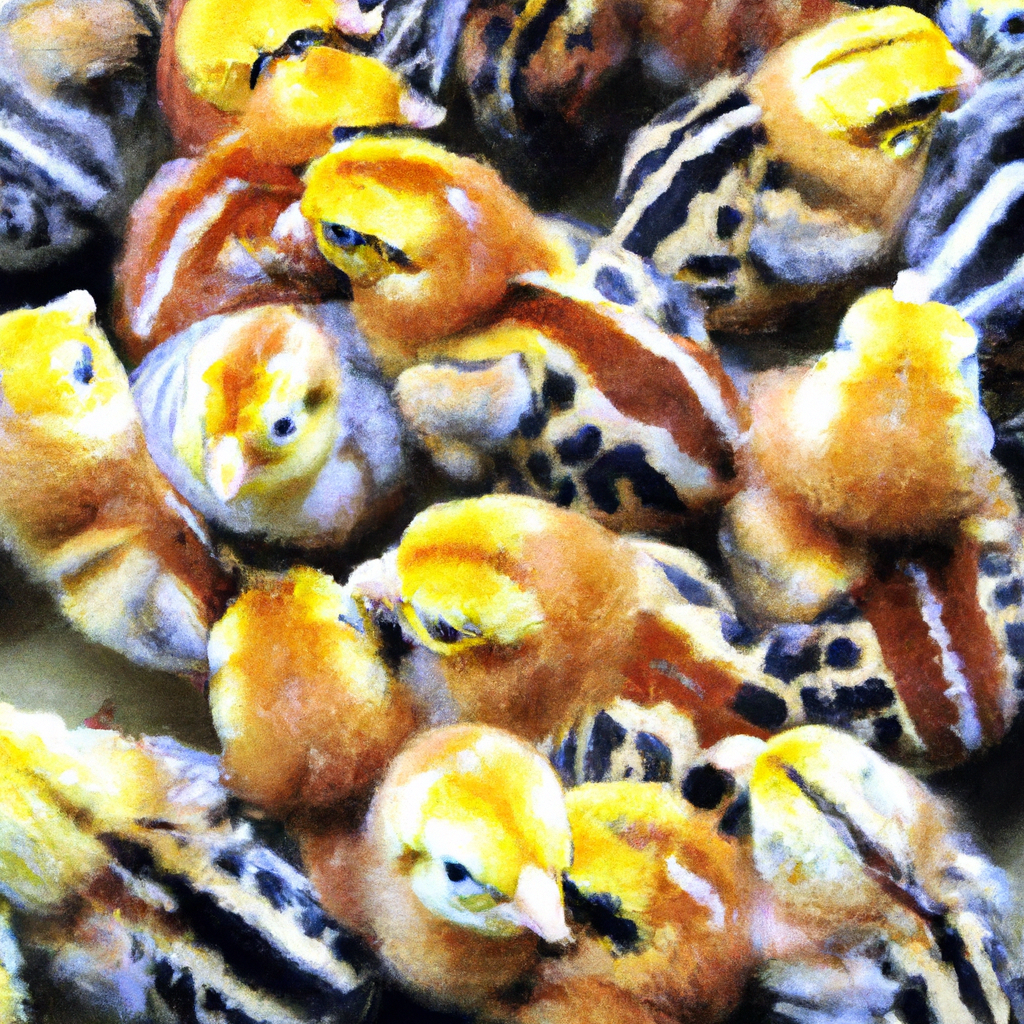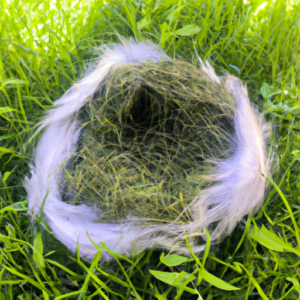
Are you excited about the upcoming arrival of new chicks in your life? Whether you’re an experienced chicken owner or a first-timer, it’s essential to make sure you’re well-prepared for their arrival. From creating a cozy and safe habitat to stocking up on essential supplies, this article will guide you through the process of welcoming these adorable little creatures into your world. So, get ready to witness the joy of nurturing and caring for new chicks with confidence and excitement!

Housing
Choosing a suitable coop
When preparing for the arrival of new chicks, one of the first considerations is providing them with a suitable coop. The coop should be well-ventilated, secure, and spacious enough to accommodate the growing chicks. A good coop will protect the chicks from predators and provide a comfortable and safe environment for them to thrive.
Ensuring proper ventilation
Proper ventilation is crucial for the health and well-being of your chicks. A well-ventilated coop helps remove excess heat and moisture, reducing the risk of respiratory issues. Good airflow also helps control odors and maintain a fresh and clean environment. Make sure to provide adequate ventilation by installing vents or windows in the coop.
Providing adequate space
New chicks require enough space to grow and exercise. When selecting a coop, consider the number of chicks you will be keeping and their expected size. Allow for sufficient space to prevent overcrowding, which can lead to stress, aggression, and the spread of diseases. Remember to provide enough roosting and nesting space as well.
Securing the coop
The safety of your chicks is paramount. It’s important to properly secure the coop to protect them from predators such as raccoons, foxes, and birds of prey. Use sturdy materials and install locks or latches on doors and windows. Inspect the coop regularly to ensure it remains predator-proof and repair any potential weak points.
Setting up nesting boxes
Nesting boxes are essential for providing a comfortable and private space for your hens to lay their eggs. These boxes should be located inside the coop and filled with suitable nesting material such as straw or wood shavings. Plan and set up the nesting boxes prior to the arrival of your chicks to ensure they have a cozy spot ready when they start laying eggs.
Preparing bedding
Choosing the right bedding is crucial for the health and hygiene of your chicks. Use materials that are absorbent, comfortable, and easy to clean. Popular bedding options include wood shavings, straw, or shredded paper. Spread a thick layer of bedding on the floor of the coop, making sure to refresh it regularly to maintain cleanliness and prevent odor buildup.
Feeding
Preparing the brooder
Before bringing your new chicks home, it’s important to set up a brooder. A brooder is a warm and safe enclosure where the chicks will spend their first weeks of life. Prepare the brooder by lining the bottom with clean bedding, such as wood shavings or newspaper. You’ll also need to provide a heat source, such as a heat lamp or heating pad, to keep the chicks warm.
Gathering necessary supplies
Make sure you have all the necessary supplies ready before the arrival of your chicks. These may include a feeder, waterer, chick starter feed, and grit. Ensure the feeder and waterer are clean and easily accessible for the chicks. Also, make sure you have enough feed and water to last for a few days, as chicks will require frequent feeding and watering.
Selecting appropriate feed
Choosing the right feed for your chicks is essential for their growth and development. Opt for a high-quality chick starter feed specifically formulated for young chicks. This feed contains the necessary nutrients, vitamins, and minerals needed to support their rapid growth. Avoid feeding them adult chicken feed as it may not provide the appropriate levels of nutrients required for their age.
Feeding schedule
Establishing a consistent feeding schedule is important to ensure your chicks receive the necessary nutrition. Feed them small amounts of feed at regular intervals throughout the day. In the first few weeks, chicks may require feed every few hours. As they grow, gradually reduce the feeding frequency, but ensure they always have access to fresh feed and water.
Feeding techniques
When offering feed to your chicks, it is important to use appropriate feeding techniques. Scatter the feed on clean and dry surfaces, allowing the chicks to naturally peck and forage. This promotes healthy development and instincts. Avoid overcrowding around the feeders to prevent competition and stress among the chicks. Observe their feeding behavior to ensure all chicks are eating adequately.

Health and Safety
Cleaning and disinfection
Maintaining a clean and hygienic environment is crucial for the health and well-being of your chicks. Regularly clean the coop, brooder, and all feeding and watering equipment to prevent the buildup of bacteria and parasites. Use animal-safe disinfectants to thoroughly clean all surfaces, ensuring you follow the manufacturer’s instructions. Good hygiene practices help reduce the risk of diseases and promote optimal chick health.
Implementing biosecurity measures
Implementing biosecurity measures is essential to prevent the introduction and spread of diseases. Limit access to the coop and ensure visitors, including family members, wash their hands before and after handling the chicks. Use separate footwear or disinfect shoes when entering the coop area. Avoid contact with other poultry or birds to minimize the risk of disease transmission.
Integrating new chicks with existing flock
If you already have an existing flock, it’s important to carefully introduce the new chicks. Separate the chicks from the older chickens until they are around the same size and have developed their feathers fully. Gradually introduce them by allowing visual contact first, then supervised physical contact. Monitoring their interactions is crucial to prevent aggression and ensure a smooth integration.
Monitoring temperature and humidity
Maintaining appropriate temperature and humidity levels is crucial for the well-being of your chicks. Use a thermometer to monitor the temperature in the brooder, adjusting the heat source as needed to maintain a constant and appropriate temperature. Aim for a temperature of around 95°F (35°C) for the first week, reducing it by 5°F (2.5°C) each week until the chicks are fully feathered. Monitor humidity levels to prevent excessive dryness or humidity, as it can impact chick health.
Preventing common chick illnesses
New chicks are vulnerable to various illnesses, so it’s important to take preventive measures. Provide them with a clean and stress-free environment, ensuring optimal nutrition and hygiene. Avoid overcrowding and maintain proper ventilation to reduce the risk of respiratory diseases. Keep an eye out for signs of illness such as lethargy, loss of appetite, or abnormal behaviors, and consult a veterinarian if needed.
Taking precautions against predators
Protecting your chicks from predators is crucial to their safety. Ensure the coop is secure and predator-proof, with sturdy fencing and locks. Remove any potential hiding spots or entry points for predators. When allowing the chicks to free-range, supervise them closely and provide shelter or netting to protect them from aerial predators. Consider installing motion-activated lights or predator deterrents to further enhance their safety.
Watering
Providing clean water source
Water is essential for the health and hydration of your chicks. Provide them with clean, fresh water at all times. Choose a suitable waterer that is small and shallow to prevent accidental drowning, as chicks can be prone to falling into deep water containers. Regularly clean the waterer and ensure it is easily accessible for the chicks.
Choosing suitable waterers
When selecting a waterer for your chicks, consider their size and safety. A small and shallow waterer is ideal, allowing the chicks easy access to water without the risk of drowning. Avoid using open containers, as they can become dirty quickly and increase the chances of contamination. Opt for a sturdy, chick-specific waterer that is easy to clean and refill.
Monitoring water consumption
Regularly monitor the water consumption of your chicks to ensure they are adequately hydrated. In hot weather or during periods of high activity, chicks may drink more water. Make sure the waterer is always filled with clean water and easily accessible. If you notice a significant decrease in water consumption or signs of dehydration, consult a veterinarian for advice.
Avoiding common water-related issues
Water-related issues such as contamination and spillage can negatively impact chick health. Regularly check the waterer to ensure it is clean and free from any debris or algae buildup. Clean and refill the waterer as needed, ensuring it is placed on a stable surface to prevent accidental tipping or spillage. Additionally, place the waterer away from the feeding area to minimize the chances of feed contamination.
Ensuring proper hydration
Proper hydration is crucial for the overall health and development of your chicks. Ensure that the chicks have access to clean and fresh water at all times. Dehydration can lead to a range of health issues, including poor growth, weakened immune system, and organ dysfunction. Regularly monitor their water consumption and make adjustments as necessary to ensure optimal hydration levels.

Heating and Lighting
Setting up appropriate brooder temperature
Maintaining the correct temperature in the brooder is essential for the chicks’ well-being. Ensure the brooder is set to an appropriate temperature based on the chicks’ age. For the first week, aim for a temperature of around 95°F (35°C) and gradually reduce it by 5°F (2.5°C) each week until the chicks are fully feathered. Use a reliable thermometer and adjust the heat source accordingly to provide a comfortable and safe environment for the chicks.
Selecting suitable heat sources
There are several heat sources you can choose from when setting up the brooder. The most common options include heat lamps, heating pads, and radiant heat panels. Heat lamps are popular, but it’s important to ensure they are securely installed and the chicks cannot come into direct contact with the bulb. Whichever heat source you choose, make sure it provides adequate heat and is safe for the chicks.
Monitoring and adjusting temperature
Maintaining a consistent temperature in the brooder is crucial to the chicks’ well-being. Regularly monitor the temperature using a reliable thermometer. Adjust the heat source or the brooder’s location as needed to ensure the chicks are comfortable. Chicks huddling together under the heat source indicates they are cold, while seeking cooler areas indicates they are too warm.
Installing proper lighting
Proper lighting is important for the chicks’ overall well-being and growth. Use appropriate lighting fixtures to provide a consistent light source in the brooder. LED bulbs are a popular option, as they are energy-efficient and provide adequate brightness. Ensure the lighting is not too bright or too dim, as extreme lighting conditions can disrupt the chicks’ sleep patterns and overall behavior.
Establishing light-dark cycle
Creating a consistent light-dark cycle helps regulate the chicks’ circadian rhythm and promotes healthy development. During the first week, provide 24 hours of light to encourage feeding and reduce stress. From the second week onwards, gradually decrease the light to around 14-16 hours of daylight, followed by 8-10 hours of darkness. Maintaining a consistent light-dark cycle helps promote natural behaviors and provides a sense of routine for the chicks.
Biosecurity
Restricting visitor access
Implementing visitor restrictions is an important biosecurity measure to protect your chicks from potential disease transmission. Limit access to the coop area, ensuring that only essential personnel are allowed entry. Visitors should wash their hands thoroughly before and after handling the chicks, and wear clean clothes and footwear. Consider providing disposable coveralls or shoe covers for visitors to further minimize the risk of contamination.
Quarantining new chicks
When introducing new chicks to an existing flock, it’s important to quarantine them initially. Quarantining allows for observation and prevents the potential spread of diseases from new chicks to the established flock. Keep the new chicks in a separate and secure area, ideally with their own brooder and feeding/watering equipment. Monitor their health closely for any signs of illness before introducing them to the existing flock.
Disinfecting tools and equipment
Proper disinfection of tools and equipment is essential in maintaining a biosecure environment. Clean and disinfect any tools or equipment used in the coop, brooder, or during chick care. Use a suitable disinfectant recommended for poultry use and follow the manufacturer’s instructions for dilution and application. Regularly disinfect the brooder, waterers, feeders, and any items that come into contact with the chicks.
Maintaining a clean environment
Maintaining a clean and sanitized environment is crucial for biosecurity. Regularly clean and remove any waste or soiled bedding from the coop and brooder. Keep the areas surrounding the coop and brooder clean and free from debris or potential attractants for pests. Properly dispose of any waste or soiled materials to prevent contamination and reduce the risk of disease transmission.
Preventing transmission of diseases
Implementing biosecurity measures helps prevent the transmission of diseases among your flock. Limit contact between your chicks and other poultry or birds, as they can introduce diseases or parasites. Avoid sharing equipment or tools with other poultry owners and do not introduce new birds to your flock without proper quarantine. Monitor your flock’s health regularly and consult a veterinarian if you notice any signs of illness.

Brooder Setup
Choosing the right brooder
Selecting the right brooder is essential to provide a safe and comfortable environment for your chicks. Consider the number of chicks you will be raising and choose a brooder that provides them with enough space to move around and grow. Brooders can vary from commercially available brooding boxes to homemade setups using plastic tubs or cardboard boxes. Ensure the brooder is secure, well-ventilated, and easy to clean.
Arranging heating elements
Proper arrangement of heating elements is crucial to ensure the chicks’ comfort and safety in the brooder. Place the heat source, such as a heat lamp or heating pad, at one end of the brooder. This creates a temperature gradient, allowing the chicks to move closer to or farther away from the heat source based on their preferred temperature. Ensure the heat source is securely installed and cannot fall or be knocked over by the chicks.
Providing suitable flooring
Choosing the right flooring for the brooder is important for the chicks’ mobility and hygiene. Use clean and absorbent bedding material, such as wood shavings or newspaper, to provide a soft and comfortable surface for the chicks to walk on. Avoid using slippery materials or materials that can cause injury, such as newspaper with a glossy finish. Regularly clean and replace the bedding to maintain a clean environment.
Including necessary accessories
To provide a comfortable and enriching environment for your chicks, include necessary accessories in the brooder. Provide a feeder and waterer that are easily accessible for the chicks. Place a few small branches or perches at various heights to encourage natural behaviors and exercise. Consider adding toys or objects for the chicks to explore and peck at to prevent boredom and promote socialization.
Socialization and Handling
Acclimating chicks to humans
Socialization with humans is important to ensure your chicks grow up to be friendly and accustomed to human interaction. Spend time with your chicks daily, gently touching and handling them. Approach them calmly and speak softly to get them used to your presence. Avoid sudden movements or loud noises that could startle or stress them. Regular positive interactions promote trust and a positive relationship with humans.
Encouraging gentle handling
Gentle handling is important to prevent stress and injury to your chicks. When picking up or handling a chick, support their body with your hands, ensuring they feel secure. Avoid squeezing or gripping them tightly. Handle them gently and avoid dropping or mishandling them. Teaching children and other family members proper handling techniques helps create a safe and positive environment for the chicks.
Promoting interaction with other chicks
Socializing with other chicks is important for your flock’s overall well-being. If you have multiple chicks, provide them with opportunities for interaction and play. Allow them to explore and interact with each other under supervision. Chicks will naturally peck and play with each other, promoting social bonds and healthy development. Ensuring adequate space in the coop and providing suitable enrichment encourages positive interaction among the chicks.
Creating a stress-free environment
A stress-free environment is crucial for the health and development of your chicks. Minimize noise, sudden movements, and disturbances that can cause stress or anxiety. Provide a calm and quiet area for the chicks to rest and sleep. Keep the brooder and coop clean and well-maintained to reduce potential stressors such as odors or unhealthy conditions. A stress-free environment promotes optimal chick growth and well-being.
Education
Researching chicken care
Educating yourself about chicken care is essential to properly care for your new chicks. Research topics such as chick behavior, nutrition, health, and husbandry practices. Read reputable books, online resources, or join relevant forums or social media groups to learn from experienced chicken owners. Staying informed and up to date with best practices for chicken care will help you provide the best care for your chicks.
Educating family members or household
If there are other members in your household, it’s important to educate them about proper chicken care. Share your knowledge and experiences with them, highlighting the importance of hygiene, proper handling, and the chicks’ well-being. Teach family members about the chicks’ needs and the responsibilities involved in raising them. Encourage open communication and a shared commitment to the chicks’ care and welfare.
Attending workshops or classes
Attending workshops or classes on chicken care can further enhance your knowledge and skills. Look for local poultry or farming organizations that offer workshops or classes on chick care and husbandry. These events provide valuable hands-on experience, expert advice, and an opportunity to network with other chicken enthusiasts. Learning from experienced individuals can provide practical tips and insights for successful chick care.
Joining poultry associations
Joining poultry associations or clubs can provide a wealth of resources and support for new chicken owners. These associations often offer educational materials, newsletters, and access to experienced breeders and experts. Participating in poultry shows or events organized by these associations can further expand your understanding of chicken care and allow you to connect with fellow enthusiasts. Being part of a community with shared interests can be both informative and enjoyable.
Preparing the Outdoor Area
Fencing off the area
When preparing the outdoor area for your chicks, it’s important to fence off the designated space. Use sturdy fencing materials to prevent predators from accessing the area. Ensure the fencing is buried or secured at the base to prevent animals from digging under it. Choose a fence height that is appropriate for the size and breed of your chickens, considering their potential flight abilities.
Eliminating potential hazards
Inspect the outdoor area for any potential hazards or items that could harm your chicks. Remove any sharp objects, poisonous plants, or chemicals that could be within the chicks’ reach. Ensure the area is free from open water sources or containers that could pose a drowning risk. Protect electrical wiring or cords to prevent chicks from pecking or chewing on them. Eliminating hazards ensures a safe and secure outdoor environment for your chicks.
Providing outdoor shelters
Outdoor shelters provide your chicks with protection from the elements, such as excessive heat, rain, or wind. Install suitable shelters, such as small coops or shade structures, within the outdoor area. These shelters should be secure, well-ventilated, and easily accessible for the chicks. Consider providing roosting and nesting spaces within the outdoor shelters to encourage natural behaviors.
Ensuring adequate space for foraging and exercise
Chickens thrive when they have enough space for foraging and exercise. Ensure the outdoor area provides sufficient space for your chicks to roam, scratch, and explore. A general rule is to have at least 10 square feet per chicken in the outdoor area. This allows them to engage in natural behaviors, find insects and vegetation to peck at, and get the exercise they need for optimal health and well-being.







